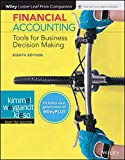
(a)
Inventory turnover ratio: This is a financial measure that is used to evaluate as to how many times a company sells or uses its inventory during an accounting period. It is calculated by using the following formula:
Days’ sales in inventory: Days’ sales in inventory are used to determine number of days a particular company takes to make sales of the inventory available with them.
Gross profit rate is the financial ratio that evaluates the money left over out of the total revenues after deducting the cost of goods sold. Thus, it shows the relationship between the gross profit and net sales. It is calculated by using the following formula:
To Calculate:
- The inventory turnover for 2016, and 2017 of Company Z.
- The days in inventory of Company Z for 2016, and 2017.
- The gross profit rate of Company Z for 2016, and 2017.
(a)
Explanation of Solution
Calculate the inventory turnover of Company Z for 2016.
Cost of goods sold = $1,288,000
Average inventory = $450,000 (1)
Calculate the inventory turnover of Company Z for 2017.
Cost of goods sold = $1,552,000
Average inventory = $560,500 (2)
Working Notes:
Calculate the average inventory for 2016.
Beginning inventory = $332,000
Ending inventory = $568,000
Calculate the average inventory for 2017.
Beginning inventory = $568,000
Ending inventory = $553,000
Calculate days in inventory of Company Z for 2016.
Total number of days = 365
Inventory turnover, 2016 = 2.86 times (a)
Calculate days in inventory of Company Z for 2017.
Total number of days = 365
Inventory turnover, 2016 = 2.77 times (a)
Calculate gross profit rate of Company Z for 2016.
Gross profit = $437,000 (3)
Sales revenue = $1,725,000
Calculate gross profit rate of Company Z for 2017.
Gross profit = $396,000 (4)
Sales revenue = $1,948,000
Working Notes:
Calculate the gross profit for 2016.
Sales revenue = $1,725,000
Cost of goods sold = $1,288,000
Calculate the gross profit for 2017.
Sales revenue = $1,948,000
Cost of goods sold = $1,552,000
Therefore, the inventory turnover of Company Z for 2016, and 2017 are 2.86 times, and 2.77 times respectively.
Therefore, the days in inventory for 2016, and 2017 are 128 days, and 132 days respectively.
Therefore, the gross profit rate of Company Z for 2016, and 2017 are 25.33%, and 20.33% respectively.
(b)
To Explain: Whether the liquidity and profitability of Company Z improve or deteriorate in 2017
(b)
Explanation of Solution
Based on the inventory turnover ratio and days’ in inventory are fluctuating in nature. Therefore, the liquidity of the company has deteriorated in the year 2016 and improved in the year 2017.
Based on the gross profit ratio, the profitability of the company has decreased.
Want to see more full solutions like this?
Chapter 6 Solutions
Financial Accounting: Tools for Business Decision Making, 8e WileyPLUS (next generation) + Loose-leaf
- Why does stakeholder impact analysis matter? [Financial Accounting] A. Impact remains constant B. Users need identical information C. Different user needs affect reporting choices D. Shareholders alone matterarrow_forwardI need help Briefly describing 2 analytical techniques based on the time value of money concepts. And Briefly describing 2 analytical techniques which are not based on the time value of money concepts. Along with Describing what you consider to be the top 2 advantages and 2 disadvantages of each technique and provide an example to support your top advantage of each method.arrow_forwardPlease need help with this accounting question not use aiarrow_forward
- Lansdowne Equipment Co. acquired machinery on January 1, 2020, for $400,000. The machinery had an original estimated useful life of 12 years and an estimated salvage value of $40,000. On January 1, 2024, Lansdowne revised the total useful life to 9 years and the salvage value to $20,000. Compute the depreciation expense for the year ending December 31, 2024, assuming Lansdowne uses straight-line depreciation.arrow_forwardLansdowne Equipment Co. acquired machinery on January 1, 2020, for $400,000. The machinery had an original estimated useful life of 12 years and an estimated salvage value of $40,000. On January 1, 2024, Lansdowne revised the total useful life to 9 years and the salvage value to $20,000. Compute the depreciation expense for the year ending December 31, 2024, assuming Lansdowne uses straight-line depreciation. Helparrow_forwardCalculate the standard direct material quantity per unit general accounting question need answerarrow_forward
- The Parks Corporation manufactures and sells Bluetooth speakers. Each speaker sells for $29.50 and the variable cost per unit is $18.75. Parks's total fixed costs are $30,000, and budgeted sales are 6,000 units. What is the contribution margin per unit?arrow_forwardNonearrow_forwardOn April 1, Usain Enterprises purchased machinery at a cost of $150,000, with a depreciable cost of $120,000 and an estimated useful life of 4 years. Using the straight-line depreciation method, calculate depreciation expense for the first year, which ends on December 31. a. $22,500 b. $30,000 c. $15,000 d. $45,000 MCQarrow_forward
 Financial AccountingAccountingISBN:9781305088436Author:Carl Warren, Jim Reeve, Jonathan DuchacPublisher:Cengage LearningPrinciples of Accounting Volume 1AccountingISBN:9781947172685Author:OpenStaxPublisher:OpenStax College
Financial AccountingAccountingISBN:9781305088436Author:Carl Warren, Jim Reeve, Jonathan DuchacPublisher:Cengage LearningPrinciples of Accounting Volume 1AccountingISBN:9781947172685Author:OpenStaxPublisher:OpenStax College Managerial Accounting: The Cornerstone of Busines...AccountingISBN:9781337115773Author:Maryanne M. Mowen, Don R. Hansen, Dan L. HeitgerPublisher:Cengage Learning
Managerial Accounting: The Cornerstone of Busines...AccountingISBN:9781337115773Author:Maryanne M. Mowen, Don R. Hansen, Dan L. HeitgerPublisher:Cengage Learning EBK CONTEMPORARY FINANCIAL MANAGEMENTFinanceISBN:9781337514835Author:MOYERPublisher:CENGAGE LEARNING - CONSIGNMENT
EBK CONTEMPORARY FINANCIAL MANAGEMENTFinanceISBN:9781337514835Author:MOYERPublisher:CENGAGE LEARNING - CONSIGNMENT



